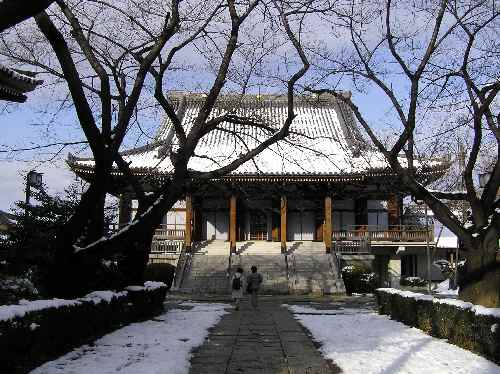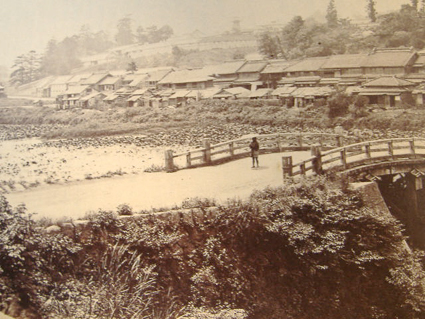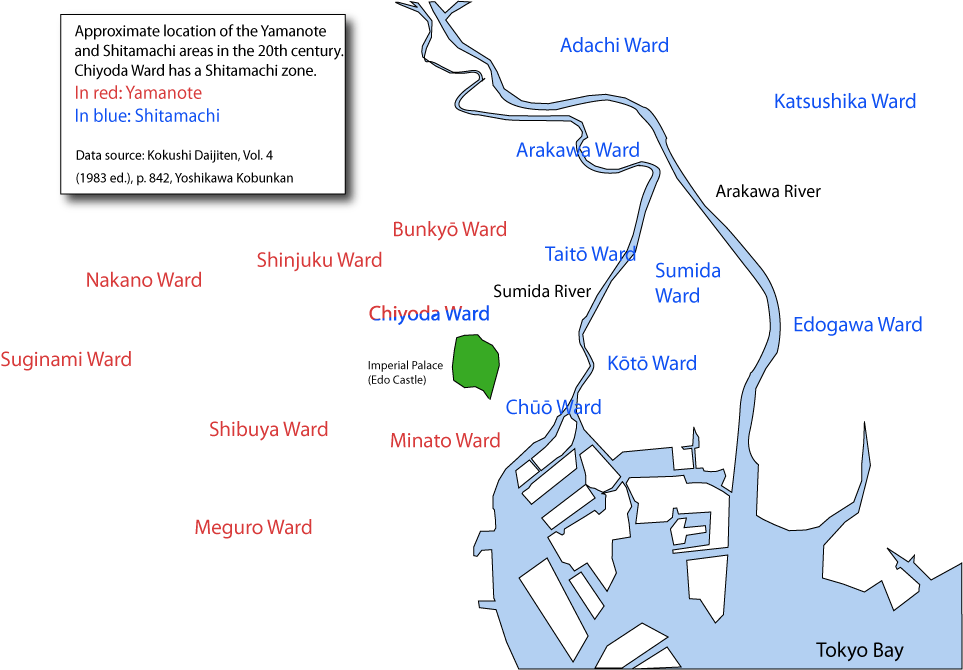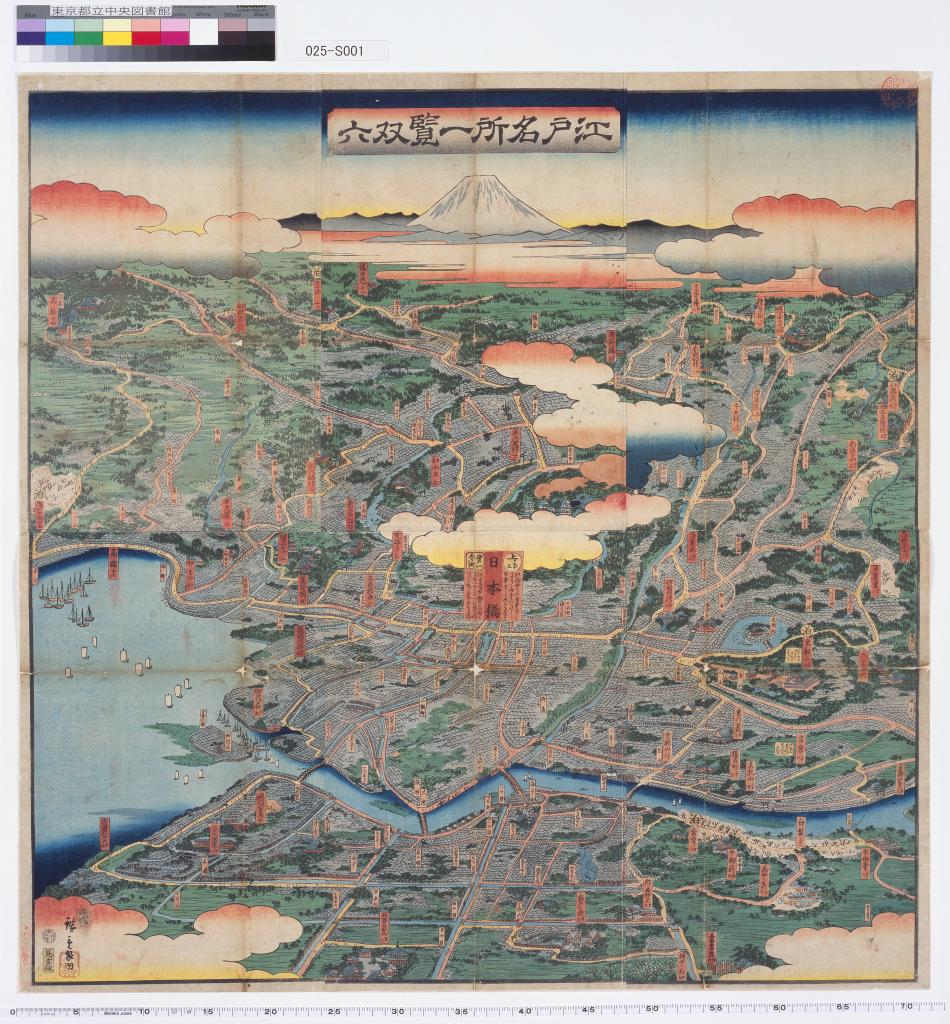|
Bunkyō
is a special ward located in Tokyo, Japan. Situated in the middle of the ward area, Bunkyō is a residential and educational center. Beginning in the Meiji period, literati like Natsume Sōseki, as well as scholars and politicians have lived there. Bunkyō is home to the Tokyo Dome, Judo's Kōdōkan, and the University of Tokyo's Hongo Campus. Bunkyō has a sister-city relationship with Kaiserslautern in the Rhineland-Palatinate of Germany. It was formed in 1947 as a merger of Hongo and Koishikawa wards following Tokyo City's transformation into Tokyo Metropolis. The modern Bunkyo ward exhibits contrasting Shitamachi and Yamanote geographical and cultural division. The Nezu and Sendagi neighborhoods in the ward's eastern corner is attached to the Shitamachi area in Ueno with more traditional Japanese atmosphere. On the other hand, the remaining areas of the ward typically represent Yamanote districts. As of May 1, 2015, the ward has a population of 217,743 (including about 6 ... [...More Info...] [...Related Items...] OR: [Wikipedia] [Google] [Baidu] |
Tokyo
Tokyo (; ja, 東京, , ), officially the Tokyo Metropolis ( ja, 東京都, label=none, ), is the capital and largest city of Japan. Formerly known as Edo, its metropolitan area () is the most populous in the world, with an estimated 37.468 million residents ; the city proper has a population of 13.99 million people. Located at the head of Tokyo Bay, the prefecture forms part of the Kantō region on the central coast of Honshu, Japan's largest island. Tokyo serves as Japan's economic center and is the seat of both the Japanese government and the Emperor of Japan. Originally a fishing village named Edo, the city became politically prominent in 1603, when it became the seat of the Tokugawa shogunate. By the mid-18th century, Edo was one of the most populous cities in the world with a population of over one million people. Following the Meiji Restoration of 1868, the imperial capital in Kyoto was moved to Edo, which was renamed "Tokyo" (). Tokyo was dev ... [...More Info...] [...Related Items...] OR: [Wikipedia] [Google] [Baidu] |
Kodokan Judo Institute
The , or ''Kōdōkan'' (講道館), is the headquarters of the worldwide judo community. The ''kōdōkan'' was founded in 1882 by Kanō Jigorō, the founder of judo, and is now an eight-story building in Tokyo. Etymology Literally, ''kō'' (講) means "to lecture", ''dō'' (道) means " way," and ''kan'' (館) is "a public building". Together it can be translated as "a place for the study of the way." Function The Kodokan Institute offers classes for those who want to master judo. The program is authorized as a non-regular school by the Tokyo Metropolitan Government. Its courses include the theories and practice of judo, and matters of general education. The course is divided into two parts: a general course for novices, and special courses for those who have completed the general course or its equivalent. The Kodokan also issues ranks, and many ''judoka'' (practitioners of judo) around the world become Kodokan members and have their ranks registered with the Kodokan. Th ... [...More Info...] [...Related Items...] OR: [Wikipedia] [Google] [Baidu] |
University Of Tokyo
, abbreviated as or UTokyo, is a public research university located in Bunkyō, Tokyo, Japan. Established in 1877, the university was the first Imperial University and is currently a Top Type university of the Top Global University Project by the Japanese government. UTokyo has 10 faculties, 15 graduate schools and enrolls about 30,000 students, about 4,200 of whom are international students. In particular, the number of privately funded international students, who account for more than 80%, has increased 1.75 times in the 10 years since 2010, and the university is focusing on supporting international students. Its five campuses are in Hongō, Komaba, Kashiwa, Shirokane and Nakano. It is considered to be the most selective and prestigious university in Japan. As of 2021, University of Tokyo's alumni, faculty members and researchers include seventeen prime ministers, 18 Nobel Prize laureates, four Pritzker Prize laureates, five astronauts, and a Fields Medalist. H ... [...More Info...] [...Related Items...] OR: [Wikipedia] [Google] [Baidu] |
Kaiserslautern
Kaiserslautern (; Palatinate German: ''Lautre'') is a city in southwest Germany, located in the state of Rhineland-Palatinate at the edge of the Palatinate Forest. The historic centre dates to the 9th century. It is from Paris, from Frankfurt am Main, 666 kilometers (414 miles) from Berlin, and from Luxembourg. Kaiserslautern is home to about 100,000 people. Additionally, approximately 45,000 NATO military personnel are based in the city and its surrounding district (''Landkreis Kaiserslautern''), contributing approximately US$1 billion annually to the local economy. History and demographics Prehistoric settlement in the area of what is now Kaiserslautern has been traced to at least 800 BC. Some 2,500-year-old Celtic tombs were uncovered at Miesau, a town about west of Kaiserslautern. The recovered relics are now in the Museum for Palatinate History at Speyer. Medieval period Kaiserslautern received its name from the favourite hunting retreat of Holy Roman Emperor Fr ... [...More Info...] [...Related Items...] OR: [Wikipedia] [Google] [Baidu] |
Koishikawa, Tokyo
is a district of Bunkyo, Tokyo. It consists of five sub-areas, . In Koishikawa are located two well regarded gardens: the Koishikawa Botanical Garden (operated by the University of Tokyo) in Hakusan, and the Koishikawa Korakuen Garden in Kōraku. Train stations for accessing this locality include , , , and Myōgadani Station. The Koishikawa arsenal was an important military installation during the Meiji era. Education Bunkyo operates the local public elementary and middle schools. Zoned elementary schools are: Kanatomi ( 金富小学校), Kubomachi ( 窪町小学校), Rekisen ( 礫川小学校), and Yanagicho ( 柳町小学校). Zoned junior high schools are: No. 1 ( 第一中学校), No. 3 ( 第三中学校), and Meidai ( 茗台中学校). Koishikawa High School is operated by the Tokyo Metropolitan Government Board of Education. In addition the metropolis operates the Koishikawa Secondary Education School. Image:Koishikawastreets.JPG, Residential street in Koishika ... [...More Info...] [...Related Items...] OR: [Wikipedia] [Google] [Baidu] |
Shitamachi
and are traditional names for two areas of Tokyo, Japan. Yamanote refers to the affluent, upper-class areas of Tokyo west of the Imperial Palace.Iwanami Japanese dictionary, 6th Edition (2008), DVD version While citizens once considered it as consisting of Hongo, Kōjimachi, Koishikawa, Ushigome, Yotsuya, Akasaka, Aoyama and Azabu in the Bunkyō, Chiyoda (in part), Shinjuku, and Minato wards, its size has grown to include the Nakano, Suginami and Meguro wards. Shitamachi is the traditional name for the area of Tokyo including today the Adachi, Arakawa, Chiyoda (in part), Chūō, Edogawa, Katsushika, Kōtō, Sumida, and Taitō wards, the physically low part of the city along and east of the Sumida River. The two regions have always been vaguely defined, as their identity was more based on culture and caste than on geography. While Tokugawa vassals of the warrior caste ( hatamoto and gokenin) lived in the hilly Yamanote, lower castes (merchants and artisans) liv ... [...More Info...] [...Related Items...] OR: [Wikipedia] [Google] [Baidu] |
Shitamachi And Yamanote
and are traditional names for two areas of Tokyo, Japan. Yamanote refers to the affluent, upper-class areas of Tokyo west of the Imperial Palace.Iwanami Japanese dictionary, 6th Edition (2008), DVD version While citizens once considered it as consisting of Hongo, Kōjimachi, Koishikawa, Ushigome, Yotsuya, Akasaka, Aoyama and Azabu in the Bunkyō, Chiyoda (in part), Shinjuku, and Minato wards, its size has grown to include the Nakano, Suginami and Meguro wards. Shitamachi is the traditional name for the area of Tokyo including today the Adachi, Arakawa, Chiyoda (in part), Chūō, Edogawa, Katsushika, Kōtō, Sumida, and Taitō wards, the physically low part of the city along and east of the Sumida River. The two regions have always been vaguely defined, as their identity was more based on culture and caste than on geography. While Tokugawa vassals of the warrior caste (hatamoto and gokenin) lived in the hilly Yamanote, lower castes (merchants and artisans) l ... [...More Info...] [...Related Items...] OR: [Wikipedia] [Google] [Baidu] |
Tokyo City
was a municipality in Japan and part of Tokyo-fu which existed from 1 May 1889 until its merger with its prefecture on 1 July 1943. The historical boundaries of Tokyo City are now occupied by the Special Wards of Tokyo. The new merged government became what is now Tokyo, also known as the ''Tokyo Metropolis'', or, ambiguously, ''Tokyo Prefecture''. History In 1868, the medieval city of Edo, seat of the Tokugawa government, was renamed Tokyo, and the offices of Tokyo Prefecture (''-fu'') were opened. The extent of Tokyo Prefecture was initially limited to the former Edo city, but rapidly augmented to be comparable with the present Tokyo Metropolis. In 1878, the Meiji government's reorganization of local governments subdivided prefectures into counties or districts (''gun'', further subdivided into towns and villages, later reorganized similar to Prussian districts) and districts or wards (''ku'') which were in ordinary prefectures cities as a whole, e.g. today's Hirosh ... [...More Info...] [...Related Items...] OR: [Wikipedia] [Google] [Baidu] |
Koishikawa
is a district of Bunkyo, Tokyo. It consists of five sub-areas, . In Koishikawa are located two well regarded gardens: the Koishikawa Botanical Garden (operated by the University of Tokyo) in Hakusan, and the Koishikawa Korakuen Garden in Kōraku. Train stations for accessing this locality include , , , and Myōgadani Station. The Koishikawa arsenal was an important military installation during the Meiji era. Education Bunkyo operates the local public elementary and middle schools. Zoned elementary schools are: Kanatomi ( 金富小学校), Kubomachi ( 窪町小学校), Rekisen ( 礫川小学校), and Yanagicho ( 柳町小学校). Zoned junior high schools are: No. 1 ( 第一中学校), No. 3 ( 第三中学校), and Meidai ( 茗台中学校). Koishikawa High School is operated by the Tokyo Metropolitan Government Board of Education. In addition the metropolis operates the Koishikawa Secondary Education School. Image:Koishikawastreets.JPG, Residential street in Koishik ... [...More Info...] [...Related Items...] OR: [Wikipedia] [Google] [Baidu] |
Tokyo Dome
is an indoor stadium in Bunkyo, Tokyo, Japan. It was designed as a baseball stadium following its predecessor, Korakuen Stadium. Construction on the stadium began on May 16, 1985, and it opened on March 17, 1988. It was built on the site of the Velodrome, adjacent to the predecessor ballpark, Korakuen Stadium. It has a maximum total capacity of 57,000 depending on configuration, with an all-seating configuration of 42,000. Tokyo Dome's original nickname was "The Big Egg", with some calling it the "Tokyo Big Egg".Haberman, Clyde Some Doubts, a Tokyo Dome New York Times, March 23, 1988 Its dome-shaped roof is an air-supported structure, a flexible membrane supported by slightly pressurizing the inside of the stadium. It was developed by Nikken Sekkei and Takenaka Corporation. It was modeled after the Hubert H. Humphrey Metrodome. It is the home field of the Yomiuri Giants baseball team. On March 18, 1988, the day after the Tokyo Dome opened, the Yomiri Giants held the game as ... [...More Info...] [...Related Items...] OR: [Wikipedia] [Google] [Baidu] |
Special Wards Of Tokyo
are a special form of municipalities in Japan under the 1947 Local Autonomy Law. They are city-level wards: primary subdivisions of a prefecture with municipal autonomy largely comparable to other forms of municipalities. Although the autonomy law today allows for special wards to be established in other prefectures, to date, they only exist in the Tokyo Metropolis which consists of 23 special wards and 39 other, ordinary municipalities ( cities, towns, and villages). The occupy the land that was Tokyo City in its 1936 borders before it was abolished under the Tōjō Cabinet in 1943 to become directly ruled by the prefectural government, then renamed to "Metropolitan". During the Occupation of Japan, municipal autonomy was restored to former Tokyo City by the establishment of special wards, each with directly elected mayor and assembly, as in any other city, town or village in Tokyo and the rest of the country. Minority, mostly leftist calls for a were not answered. The ... [...More Info...] [...Related Items...] OR: [Wikipedia] [Google] [Baidu] |
Meiji Period
The is an era of Japanese history that extended from October 23, 1868 to July 30, 1912. The Meiji era was the first half of the Empire of Japan, when the Japanese people moved from being an isolated feudal society at risk of colonization by Western powers to the new paradigm of a modern, industrialized nation state and emergent great power, influenced by Western scientific, technological, philosophical, political, legal, and aesthetic ideas. As a result of such wholesale adoption of radically different ideas, the changes to Japan were profound, and affected its social structure, internal politics, economy, military, and foreign relations. The period corresponded to the reign of Emperor Meiji. It was preceded by the Keiō era and was succeeded by the Taishō era, upon the accession of Emperor Taishō. The rapid modernization during the Meiji era was not without its opponents, as the rapid changes to society caused many disaffected traditionalists from the former samu ... [...More Info...] [...Related Items...] OR: [Wikipedia] [Google] [Baidu] |



.jpg)



